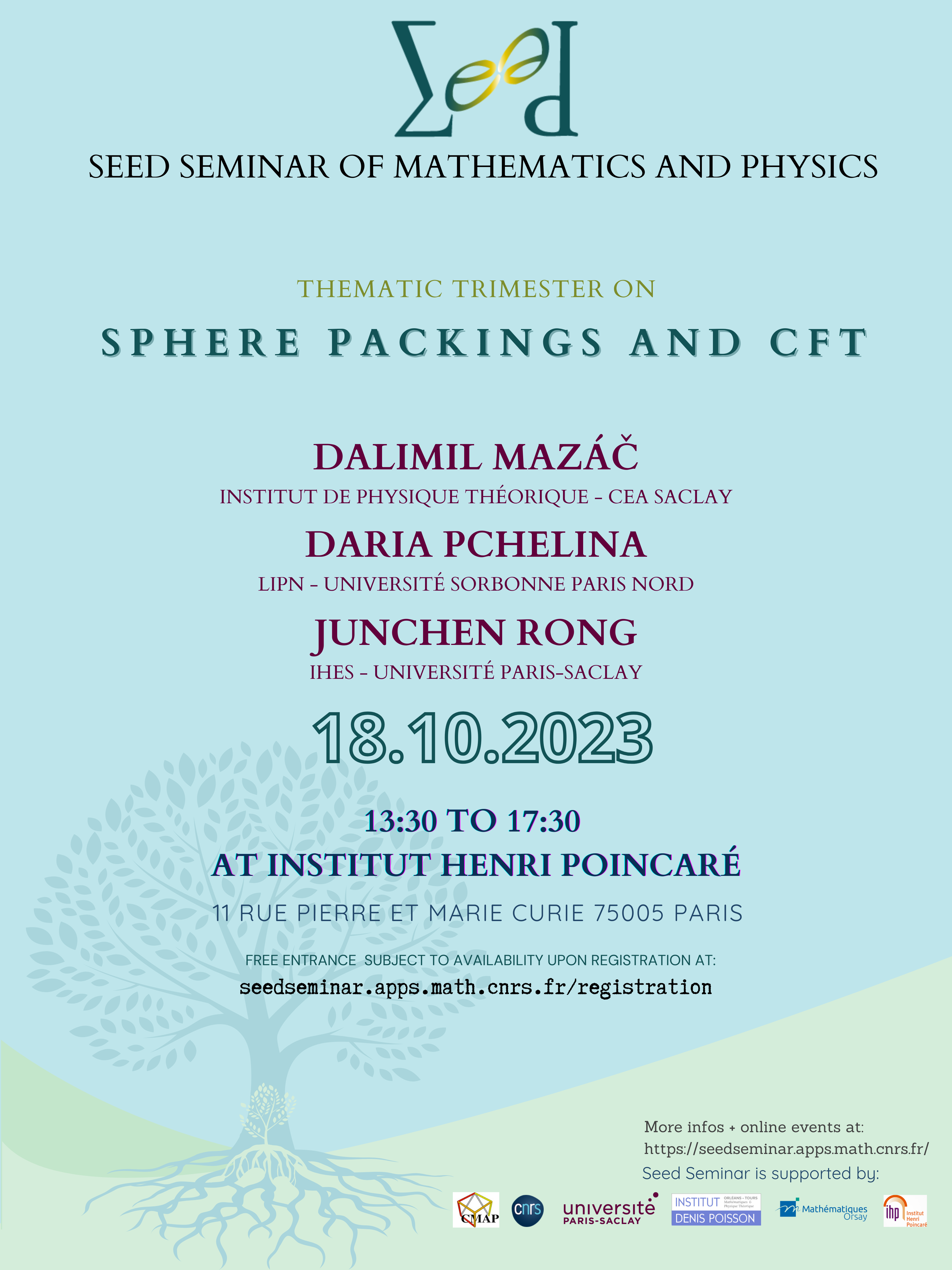Sphere Packings and CFT
Maryam Mirzakhani
Institut Henri Poincaré
The Seed seminar of mathematics and physics is a seminar series that aims to foster interactions between mathematicians and theoretical physicists, especially among young researchers. It is structured into three-month thematic periods, the fall 2023 one being on Sphere Packings and CFT.
We open this thematic trimester with an in-person kick-off event at the Institut Henri Poincaré with contributions from Dalimil Mazáč, Daria Pchelina and Junchen Rong.
Registration for the in-person event is free but mandatory, see Registration in the menu on the left.
If you cannot attend the in-person event but are interested in following the talks online, please subscribe here to the Seed seminar mailing list, on which Zoom links will be shared for this event and future ones.

